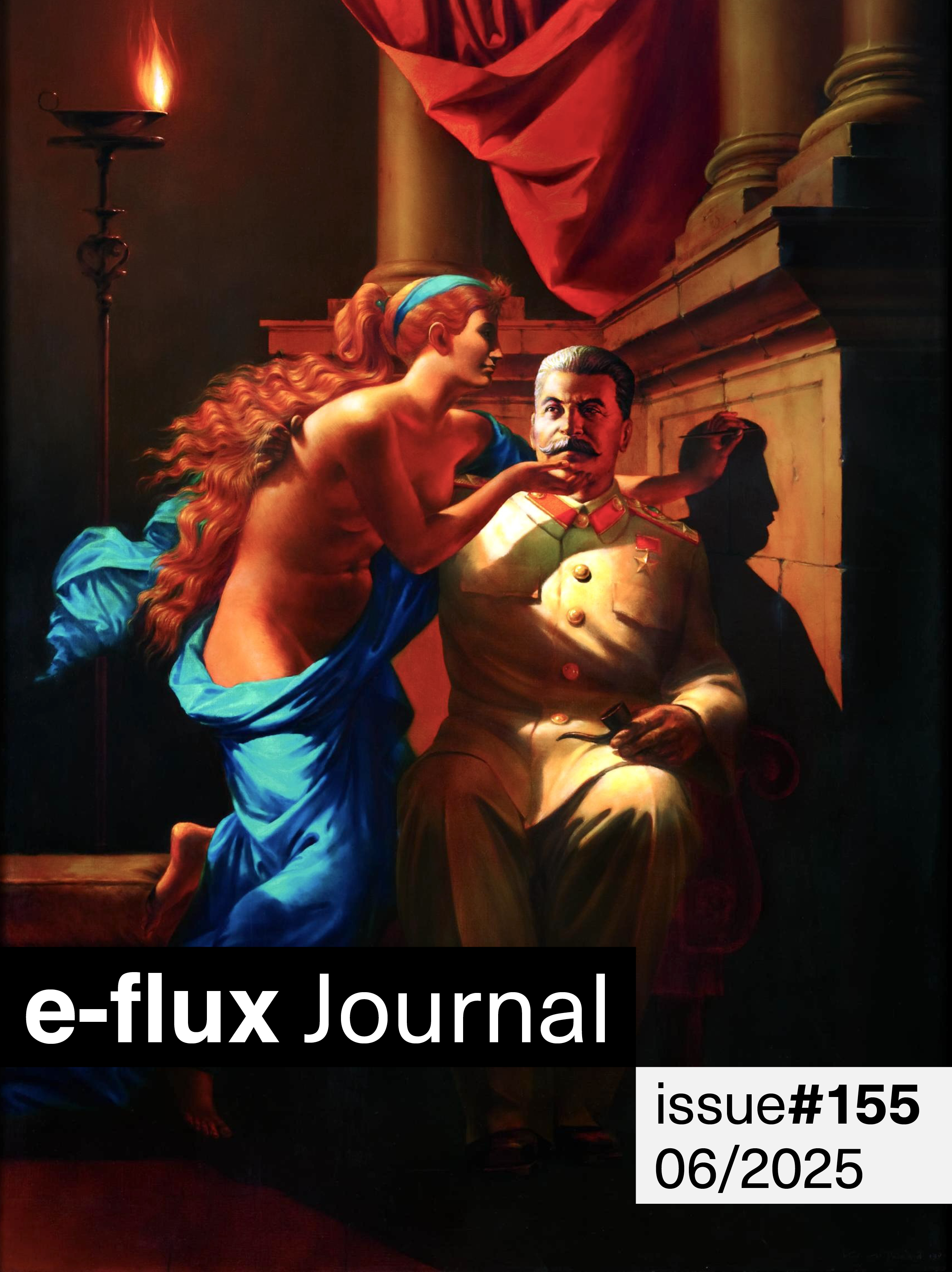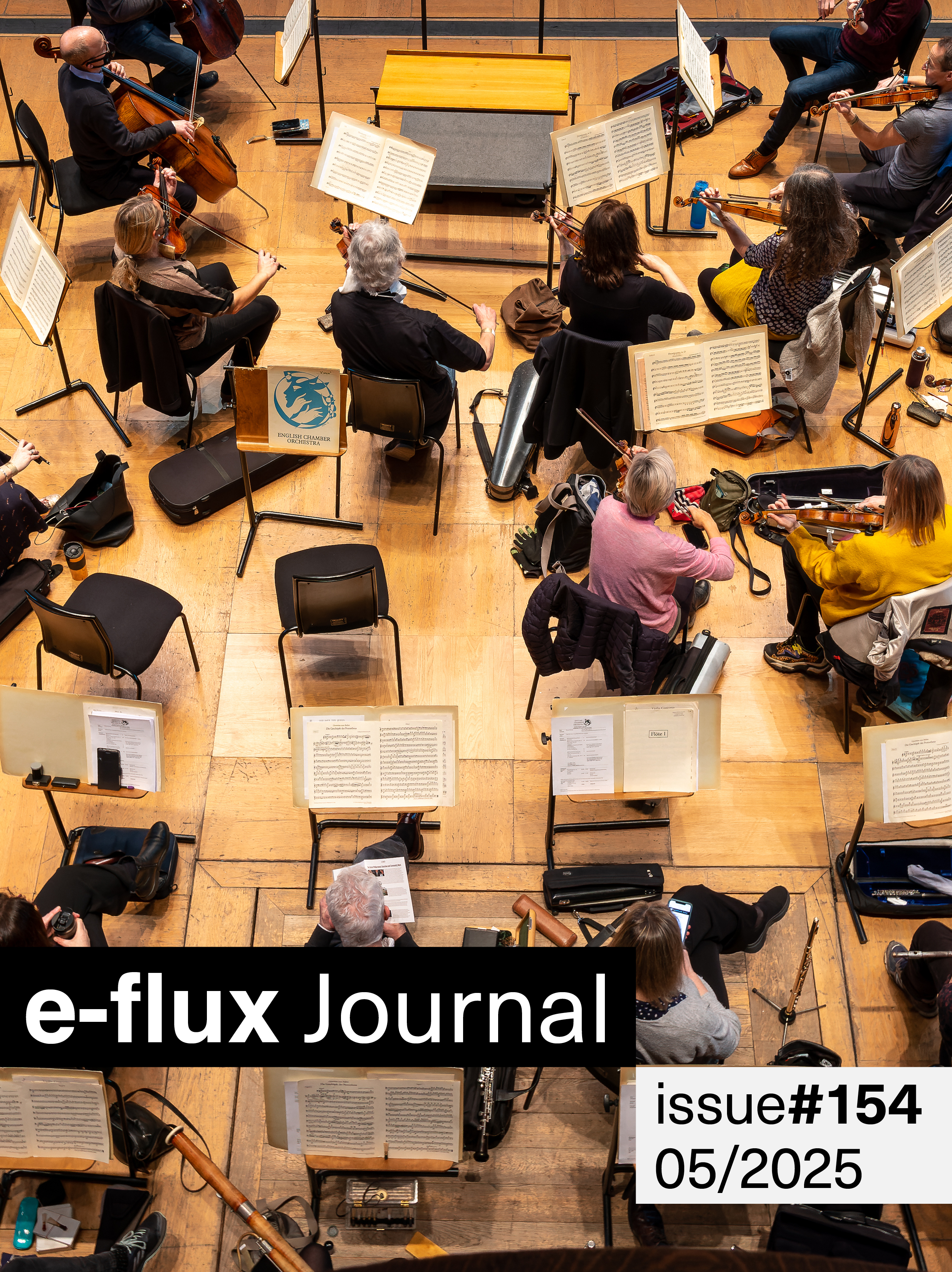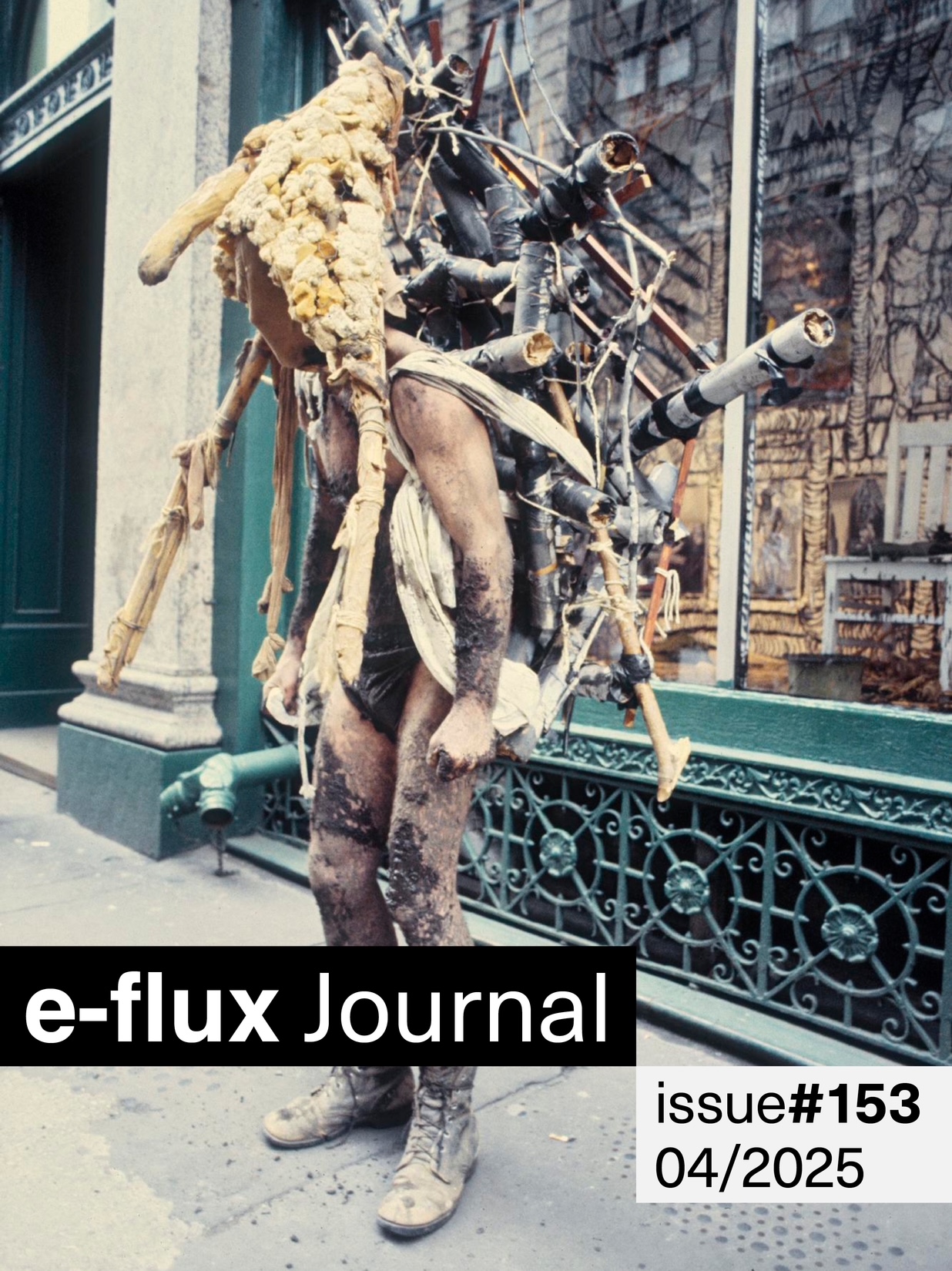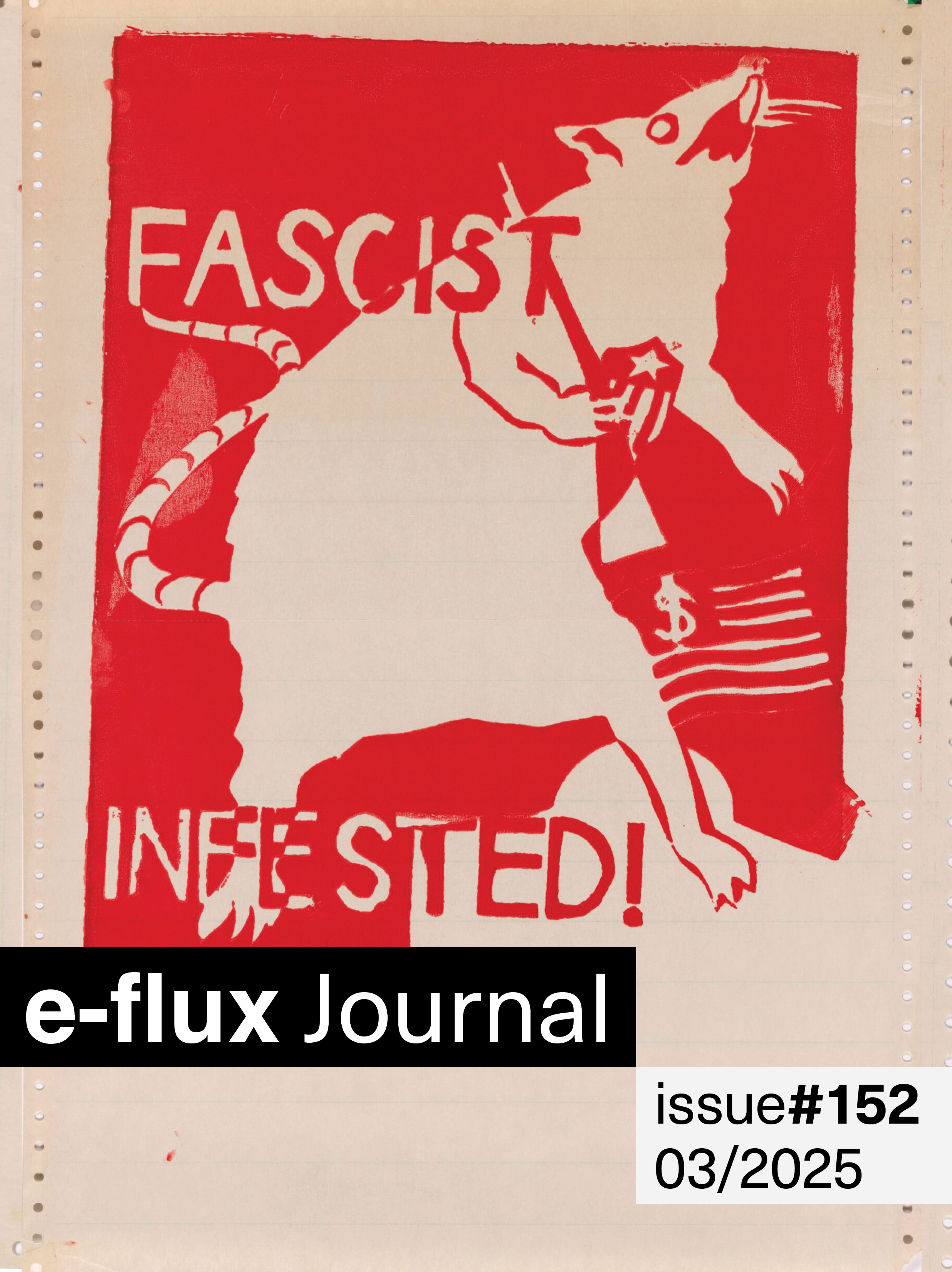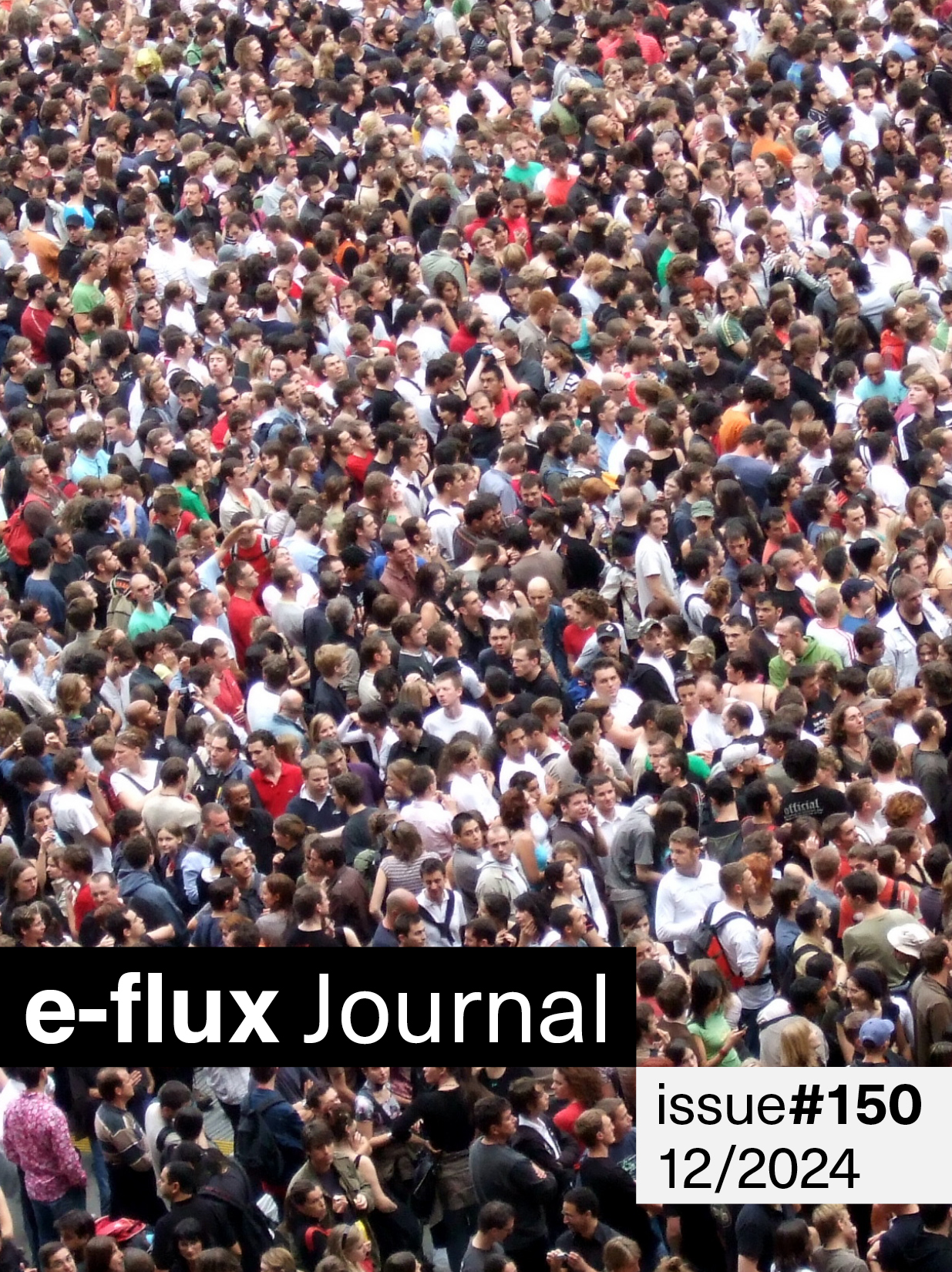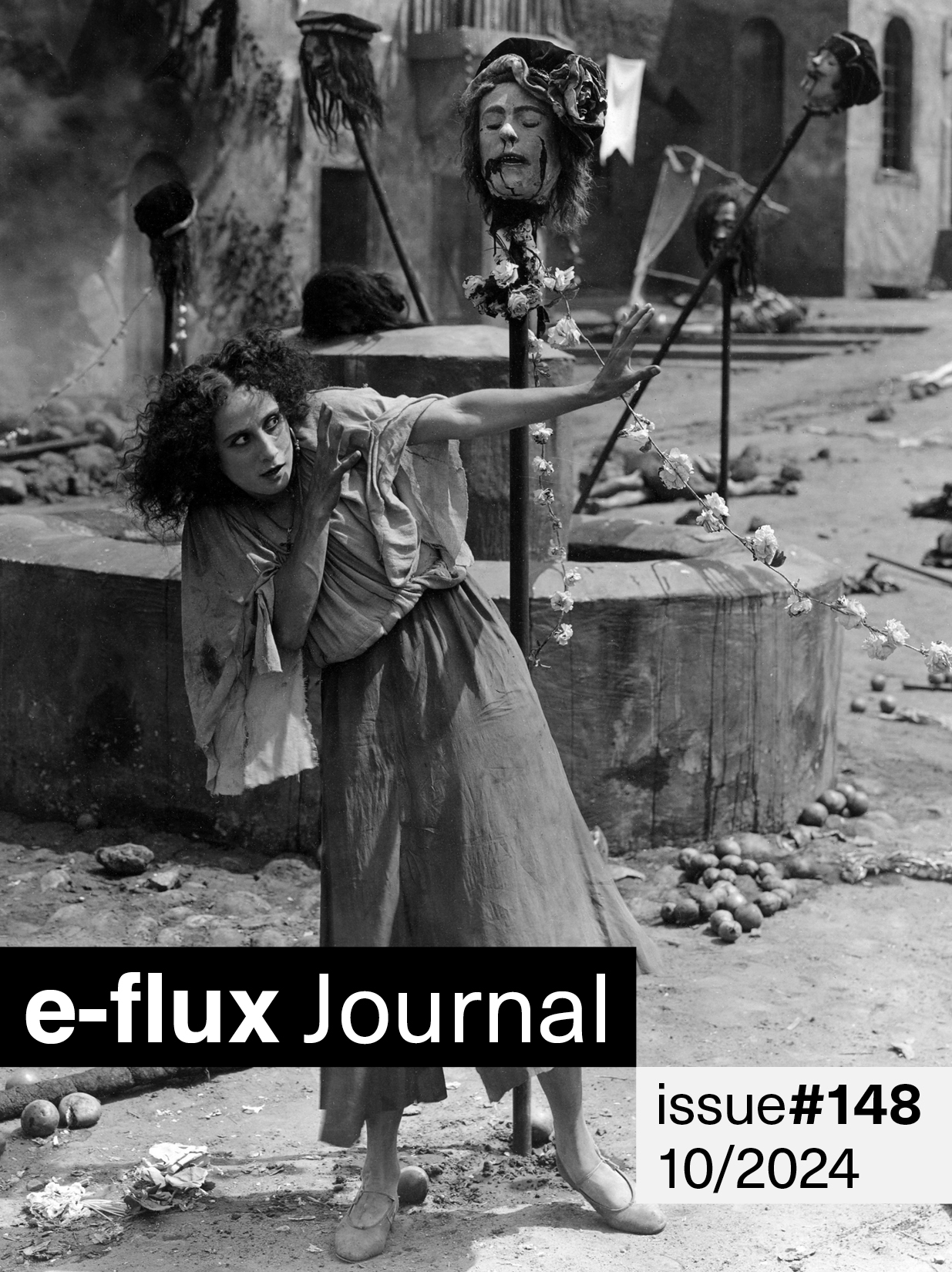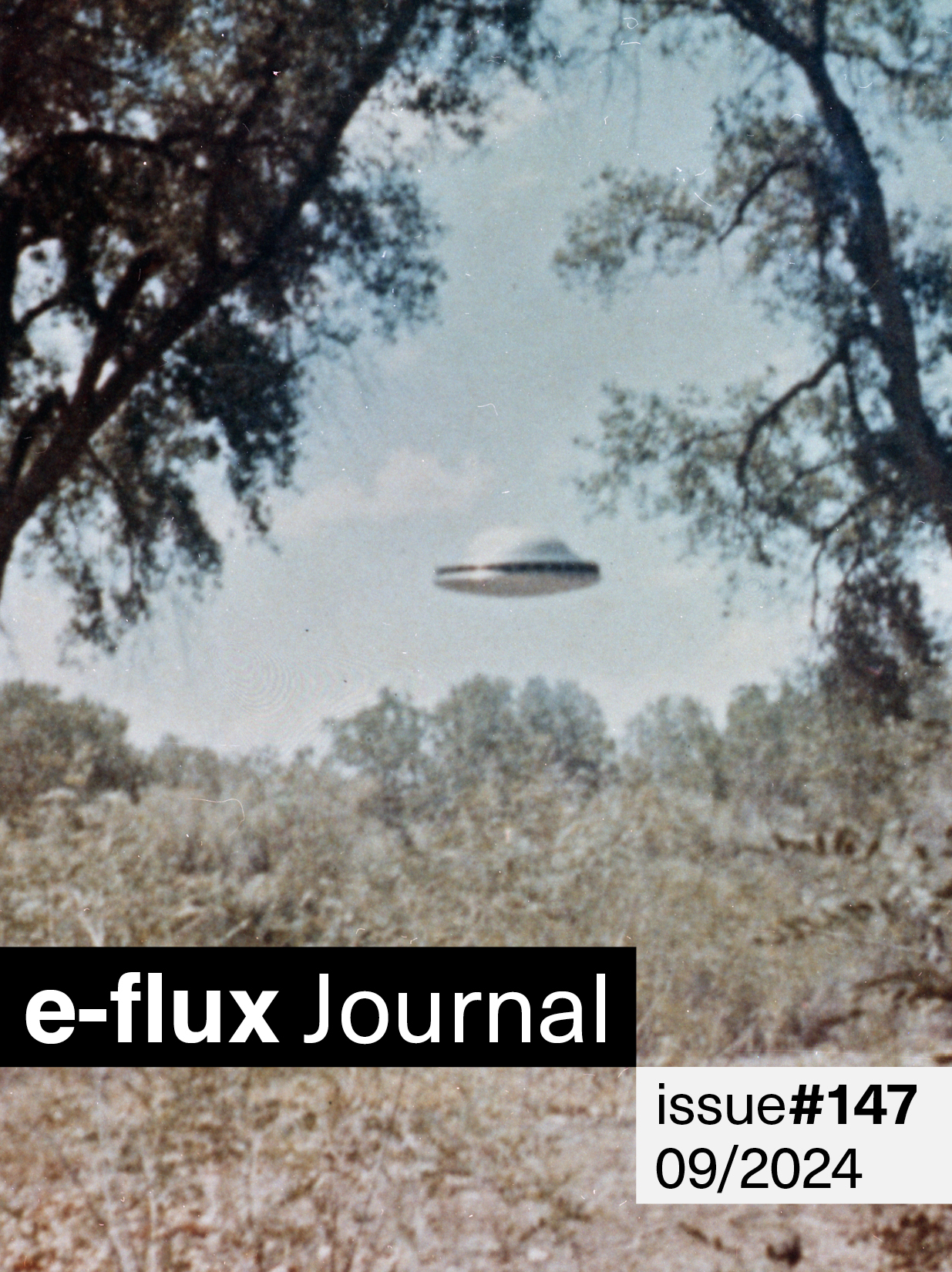e-flux journal issue 98
with Franco “Bifo” Berardi, Alina Popa, T. J. Demos, Tony Wood, Tyler Coburn, Ahmet Öğüt, and Klara Kemp-Welch
The term “nerd” might have originated in the 1950s, but today we can really see how the rises and changes in its usage followed rises and changes in the usage of intelligent machines. Let’s follow the term for a moment through a particularly male scenario: If the nemesis of the nerd in popular culture was the jock—an able-bodied, handsome man from a family of good standing—then it was probably right that they should go to war against each other. The jock combined all of the characteristics that the dominant world economies (especially the US and UK) needed for maintaining industrial and corporate command—social entitlement, physical strength—until the late twentieth century, when command would shift to a “nerd” register: technical, hidden, arcane, taxonomic, and antisocial. It may have been only when Bill Gates amassed historically unprecedented wealth that it became clear that another order was on the rise.
Franco “Bifo” Berardi warns in this issue of e-flux journal that “when intelligence is not restrained by sensibility, it deploys as brutal force.” Where intellect might once have been seen as the softer alternative to physical force, today we need to understand how a form of violence specific to deterministic machines renders intellect the dominant power in the Darwinian game. How, then, can we decouple sensibility from intellect so that it might stand as a check on the indifferent calculations of the latter?
Nowadays, we are teaching robots myopia: find the image with a crosswalk; mark all images with a stoplight until there are none left to mark; click all images that show no future. Locate all humans in the stadium with criminal facial characteristics.
Sometimes, not seeing the larger picture is the whole point: we need frames, close-ups, and jump cuts if we are to have images at all. On the other hand, congenital aphantasia, or the total lack of a mind’s eye, may also have its advantages, but it certainly has its drawbacks, too.
What happens if we measure affect like this: How many images of trees burning must we swipe through before the screen itself gets hot, before the viewer’s own temperature changes? What happens if in this scenario, the trees are swapped out for museums, and, more largely, what happens if the viewer is an intelligent being without sensibility? On another level, what if artificial programming isn’t all bad, and in fact is responsible for human artistic output? Alina Popa asks: “What if an artwork is not human performance but the artificially programmed human, or all the nonhuman serendipitous elements that have programmed her?” In any case, it seems that we as humans still have a chance to get a leg up on the automatons—but the window may be closing rapidly. Ahmet Öğüt concludes that our modes of self-design are being steadily overtaken by unrestrained intelligence: “Before algorithmic-design completely takes control, there is still another chance: the more we confuse the algorithm, the more liberated we are.”
In terms of a shared vision, artistic or otherwise, while there are both trees and forests still available for viewing, it’s unclear whether we—a we that includes automated beings, unrestricted by sensibility—are seeing in bits and pieces these days, or whether there is rather some semblance of a whole that exists outside of shared violence. It’s about time, as T. J. Demos posits amidst climate and other kinds of disasters, to consider a new ecology of images.
Meanwhile, it is important to keep in mind the vast range of possibilities for the sources of the weather(s) that engulf us. Harun Farocki notes in Parallel I, that “in cinema there is the wind that blows and the wind blown by a wind machine. With computer images, there is only one kind of wind. A new constructivism.”
Somewhere between the dimensions of space and time lies weather. We probably need long-range vision and long-game thinking to make it through fire, wind, flood, glitch, and fog with our morphing, possibly cyborgian, but stubbornly ill-adapted bodies. “Is it possible,” Tyler Coburn asks of our human form, “somewhere between now and the suspension of everything, that our bodies experience such a degree of evolutionary change that the biological, ontological, and legal criteria of the human come undone—when the human, as we know it, fragments or even ceases to exist?” Tony Wood raises the stakes, or changes them: “Why should we assume humankind has any right to decide whether it gets perpetuated—and if it does, in what form? Why should the future mean more of the same?”
It comes as no surprise that science fiction, once the domain of nerds, now increasingly reads as prophetic for opening technical or scientistic endgames to unknown affects. Wood looks at three science-fiction stories—Samuel R. Delany’s Dhalgren, Andrei Tarkovsky’s Stalker, and Jeff VanderMeer’s Southern Reach trilogy—as portraying worlds defined by collapsed orders, seemingly anticipating a total reckoning. The collapsed orders are often in fact disorderly sequencings of production and consumption—even of the human itself, where the prospect of humanity consuming itself through its own production looks eerily similar to a punishment inflicted by an alien force. Caught in a Darwinian loop, the question of sensibility arises again, but now as a last resort in determining which improvements have rendered the human too monstrous even for itself.
—Editors
Franco “Bifo” Berardi—(Sensitive) Consciousness and Time: Against the Transhumanist Utopia
The history of social civilization in the last two centuries may be read as an attempt to escape the inflexible law of the survival of the fittest. Social solidarity has been the attempt to transform the world into an anti-natural place of no competition. The autonomy of politics and ethics from the natural law of evolution was based on the conscious limiting of the power of intelligence. When intelligence is not restrained by sensibility, it deploys as brutal force.
Alina Popa—Art after Cantemir
Our idea was that if life and movement have already been captured by the neoliberal apparatus, and if thought itself is movement, providing orientations in the space of the mind and being deeply connected to one’s life-form and body arrangements, then they have to be provided with different choreographies than those enforced by default. Not only have we noticed that there are life-forms imposed if one’s practices are left unchoreographed, but there is also a standard form of thought and action when it comes to overcoming capitalism. One of the reasons behind the Unsorcery project was the mental saturation with the same thought movements performed by the leftist mind: being against, exercising criticism/critique, deconstructing, etc. Not only capitalism but also its enemies seemed to have been captured in default thought forms.
T. J. Demos—The Agency of Fire: Burning Aesthetics
We have images of devastation, but these images, mostly found on news and social media sites, don’t, can’t, show the devastation of images wrought by such apocalypses: burning aesthetics. Welcome to the Pyrocene, the geological age of fire, matched by the overwhelming affects of fear and dread, and complicated by the very incomprehensibility of responsibility. We’re dealing with the unstoppable spread of chain reactions of material oxidation, releasing more carbon dioxide that causes further warming and droughts and that prepares more ground for fires, all sparked by the depersonalized, historically agglomerative networked agency of the petrocapitalist political economy—that ultimately burns itself. The power of this socio-climatic event ultimately negates the safe separation between traumatic experience and investigative security, between present emergency and forensic aftermath. Its threat is that there will be no aftermath.
Tony Wood—Intrusions: Or, The Golden Age Is Not in Us
If Dhalgren shows us the crumbling of consumption in a capitalist society, Stalker portrays the collapse of the whole mechanism of production in a state-socialist one—symmetrical disintegrations that reflect the respective priorities of the rival Cold War systems. The collapse in Stalker goes beyond industrial production, which was the raison d’être for the Soviet planned economy as a whole—represented in the film by rusting equipment, warehouses that now store nothing but wind-sculpted sand—extending to the production of knowledge and meaning, the exhaustion of which is portrayed by the Writer and the Scientist. When all the machinery of the state-socialist system begins to seize up, what rationale or guiding principle can sustain people from one day to the next, let alone in decades to come? This is a moral crisis, to be sure—but a systemic, rather than an individual or personal one.
Tyler Coburn—Ergonomic Futures
Say the gods latched a chain to the heavens in an effort to yank Zeus down. Well, Zeus would simply pick it up, give it a tug, and the rebel gods, their earthly minions, the entire carnal world, would be flung through the cosmos to an untimely end. With a mere twist of his finger, Zeus could take control of the chain: as a weapon, a keepsake, a necklace for the peak of Olympus. Zeus never acted on this threat, but his gauntlet kept hanging. With each passing era, it grew ever more like a chain. The natural world took a liking to this object. Creatures began to clamber up and take shelter in its links. By all accounts, they loved the altitude and the elliptical life. Gods come and go, and still the chain keeps hanging. Trees have sprung up around it, but if we look closely, we can see it: a weathered thing, more rust than metal; a testament to all we’ve forgotten to remember—to the worlds of old epistemologies, to the aliens of the Enlightenment. At some point, the future may reclaim this chain.
Ahmet Öğüt—From Self-Design to Algorithmic-Design
In 2007, Turkish sociologist Şerif Mardin proposed the term “mahalle baskısı”—which translates as “community pressure” or “peer pressure,” and which refers to the practice of neighborhoods policing themselves—to describe a common experience in urban Turkey today: a clash of intolerance between secular Turkish society and Islamic lifestyle. With the rise of right-wing forces all over the world, mahalle baskısı can be found in many places—wherever conservatism and patriarchy reign. This leads to a new danger, in which two kinds of policing combine: mahalle baskısı and “algorithmic-design,” which is self-design mediated by algorithms for the collection of user data, the production of brand value, and surveillance. As an potential response to this danger, Boris Groys’s original conception of self-design can be empowering, though given the more complicated nature of self-design today, we will have to go further.
Klara Kemp-Welch—NET: An Open Proposition
Kozłowski arranged a “reception” of the materials that the recipients of NET had sent him in response to the proposal in his apartment in Poznań on the evening of May 22, 1972. Though the reception was a way of sharing the materials that had arrived in the post (“after a month or two all sorts of mail arrived”) from twenty-four of those to whom they had sent the proposal, it was more informal than an exhibition, with materials hung all over the place, piled up on tables, and arranged on the floor for lack of space. Among them was Perneczky’s series on the theme of identification, suspended above a desk. Kozłowski had written to Perneczky (in German) in March 1972 after receiving a card from him, promising to put him on the NET appendix and send him a copy soon. He explained that he was planning to present the NET materials received to date in May and asked to include “Deine Concept Art.” The artist had invited just ten close acquaintances to the reception, making the raid that occurred forty-five minutes after the invitees arrived all the more shocking, since it was clear that one of his friends had informed on him. The materials were duly confiscated, including the film from the camera used to document the meeting itself: “They took it all down and took it away.”

